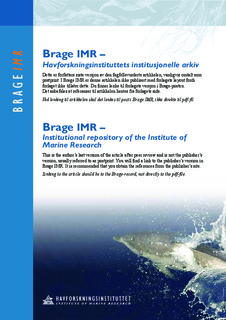| dc.description.abstract | Some fish species have wide distribution areas that span very different habitats. In this investigation we have studied Atlantic cod (Gadus morhua), which is an example of such a species, to demonstrate how this may have caused adaptations to key features such as fecundity, growth and age and size at first spawning. We have studied cod from the Barents Sea, Icelandic waters, North Sea and Irish Sea. The ovary sampling was undertaken over several years, however, not always sequentially, in order to assess whether the relationships between fecundity and other key features were constant or variable. Also, we compared historical maturity ogives and growth from the different regions. There was a clear pattern with fish maturing at a greater age and size in the north compared to the south. For three of the four cod stocks we demonstrated a significant reduction in relative potential fecundity as maturity progressed towards spawning, i.e., as the mean diameter of vitellogenic follicles increased. To be able to compare potential fecundity in a standardised way both in time and space, we constructed models that included mean diameter as one of the independent variables. Our potential fecundity comparisons clearly indicated a north-south gradient with increasing size-specific fecundity towards the south. The higher fecundity of the fish in the south could only partly be explained by the higher condition and temperature that was observed in these waters. | en_US |
